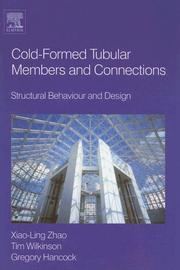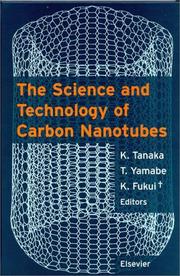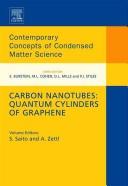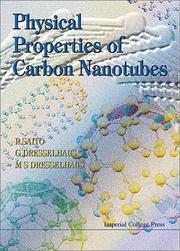| Listing 1 - 10 of 32 | << page >> |
Sort by
|
Book
ISBN: 9811937001 9811936994 Year: 2023 Publisher: Singapore : Springer,
Abstract | Keywords | Export | Availability | Bookmark
 Loading...
Loading...Choose an application
- Reference Manager
- EndNote
- RefWorks (Direct export to RefWorks)
Arch bridges --- Tubular steel structures --- Tubular bridges --- Design and construction. --- Bridges, Tubular --- Bridges --- Steel tubular structures --- Building, Iron and steel --- Steel, Structural --- Tubes, Steel --- Arched bridges --- Bridges, Arched

ISBN: 1281036811 9786611036812 008052933X 9780080529332 9780080441016 0080441017 Year: 2005 Publisher: Amsterdam ; Boston : Elsevier,
Abstract | Keywords | Export | Availability | Bookmark
 Loading...
Loading...Choose an application
- Reference Manager
- EndNote
- RefWorks (Direct export to RefWorks)
Cold formed structural members are being used more widely in routine structural design as the world steel industry moves from the production of hot-rolled section and plate to coil and strip, often with galvanised and/or painted coatings. Steel in this form is more easily delivered from the steel mill to the manufacturing plant where it is usually cold-rolled into open and closed section members.This book not only summarises the research performed to date on cold form tubluar members and connections but also compares design rules in various standards and provides practical design exam
Steel --- Steel, Structural. --- Tubular steel structures. --- Cold working. --- Steel tubular structures --- Building, Iron and steel --- Steel, Structural --- Tubes, Steel --- Structural steel --- Building materials --- Civil engineering --- Girders --- Iron and steel bridges --- Iron, Structural --- Structural steel industry --- Steelwork --- Engineering --- Civil Engineering
Book
ISBN: 1306124549 9781306124546 9781606503058 1606503057 1606503030 9781606503034 9781606503034 Year: 2013 Publisher: New York, [New York] (222 East 46th Street, New York, NY 10017) : Momentum Press,
Abstract | Keywords | Export | Availability | Bookmark
 Loading...
Loading...Choose an application
- Reference Manager
- EndNote
- RefWorks (Direct export to RefWorks)
Tubular combustion describes flames in tubes where ignition and propagation occur in spatially confined, highly-controlled environments, created in narrow elongated cylindrical geometry. This confinement allows for unique advantages where extremely even heat dispersion is required over a large surface while still maintaining fuel utilization efficiency.
Tubes --- Combustion. --- Thermochemistry --- Heat --- Smoke --- Thermodynamics --- Thermodynamics. --- Tubular flame --- cylindrical flame --- axisymmetric flame --- flame sheet --- flame stretch --- flame curvature --- vortex --- swirl --- Lewis number --- similar solution --- asymptotic analysis --- computational simulation --- pressure diffusion --- Raman spectroscopy --- tubular flame structure --- cellular instability --- rapidly-mixed combustion --- non-premixed combustion --- liquid film combustor --- microcombustor --- tubular flame burners
Book
ISBN: 012811858X 0128117699 9780128118580 9780128117699 Year: 2018 Publisher: Cambridge, MA ; Oxford, United Kingdom : Gulf Professional Publishing, an imprint of Elsevier,
Abstract | Keywords | Export | Availability | Bookmark
 Loading...
Loading...Choose an application
- Reference Manager
- EndNote
- RefWorks (Direct export to RefWorks)
"Elements of Oil and Gas Well Tubular Design offers insight into the complexities of oil well casing and tubing design. The book's intent is to be sufficiently detailed on the tubular-oriented application of the principles of solid mechanics while at the same time providing readers with key equations pertinent to design. It addresses the fundamentals of tubular design theory, bridging the gap between theory and field operation. Filled with derivations and detailed solutions to well design examples, this book provides the well designer with sound engineering principles applicable to today's oil and gas wells"--
Oil well casing. --- Tubes --- Design and construction. --- Tubing --- Tubular goods --- Shells (Engineering) --- Casing, Oil well --- Oil well drilling --- Oil wells --- Equipment and supplies

ISBN: 0080426964 9780080426969 9780080540757 0080540759 1281028649 9781281028648 9786611028640 6611028641 Year: 1999 Publisher: Amsterdam ; New York : Elsevier,
Abstract | Keywords | Export | Availability | Bookmark
 Loading...
Loading...Choose an application
- Reference Manager
- EndNote
- RefWorks (Direct export to RefWorks)
Carbon Nanotubes (CNT) is the material lying between fullerenes and graphite as a new member of carbon allotropes. The study of CNT has gradually become more and more independent from that of fullerenes. As a novel carbon material, CNTs will be far more useful and important than fullerenes from a practical point of view, in that they will be directly related to an ample field of nanotechnology. This book presents a timely, second-generation monograph covering as far as practical, application of CNT as the newest science of these materials. Most updated summaries for preparation, purific
Electronics and optics of solids --- Carbon --- Nanostructured materials --- Tubes --- Tubes. --- Carbon. --- Nanostructured materials. --- Nanomaterials --- Nanometer materials --- Nanophase materials --- Nanostructure controlled materials --- Nanostructure materials --- Ultra-fine microstructure materials --- Microstructure --- Nanotechnology --- Group 14 elements --- Light elements --- Tubing --- Tubular goods --- Shells (Engineering)

ISBN: 1281762695 9786611762698 0080569919 0444532765 Year: 2008 Publisher: Amsterdam ; Boston : Elsevier,
Abstract | Keywords | Export | Availability | Bookmark
 Loading...
Loading...Choose an application
- Reference Manager
- EndNote
- RefWorks (Direct export to RefWorks)
This volume is devoted to mostly to nanotubes, unique synthetic nanoscale quantum systems whose physical properties are often singular (i.e. record-setting). Nanotubes can be formed from a myriad of atomic or molecular species, the only requirement apparently being that the host material or "wall fabric? be configurable as a layered or sheet-like structure. Nanotubes with sp2-bonded atoms such as carbon, or boron together with nitrogen, are the champions of extreme mechanical strength, electrical response (either highly conducting or highly insulating), and thermal conductance. Carbon nanot
Carbon. --- Nanostructured materials. --- Tubes. --- Tubing --- Tubular goods --- Shells (Engineering) --- Nanomaterials --- Nanometer materials --- Nanophase materials --- Nanostructure controlled materials --- Nanostructure materials --- Ultra-fine microstructure materials --- Microstructure --- Nanotechnology --- Group 14 elements --- Light elements

ISBN: 1281866237 9786611866235 1615832386 1860943799 9781860943799 9781860942235 1860942237 9781615832385 9781860940934 1860940935 9781281866233 661186623X Year: 1998 Publisher: London : Imperial College Press,
Abstract | Keywords | Export | Availability | Bookmark
 Loading...
Loading...Choose an application
- Reference Manager
- EndNote
- RefWorks (Direct export to RefWorks)
This is an introductory textbook for graduate students and researchers from various fields of science who wish to learn about carbon nanotubes. The field is still at an early stage, and progress continues at a rapid rate. This book focuses on the basic principles behind the physical properties and gives the background necessary to understand the recent developments. Some useful computational source codes which generate coordinates for carbon nanotubes are also included in the appendix.
Carbon. --- Nanostructured materials. --- Tubes. --- Group 14 elements --- Light elements --- Tubing --- Tubular goods --- Shells (Engineering) --- Nanomaterials --- Nanometer materials --- Nanophase materials --- Nanostructure controlled materials --- Nanostructure materials --- Ultra-fine microstructure materials --- Microstructure --- Nanotechnology
Book
Year: 2021 Publisher: Basel, Switzerland MDPI - Multidisciplinary Digital Publishing Institute
Abstract | Keywords | Export | Availability | Bookmark
 Loading...
Loading...Choose an application
- Reference Manager
- EndNote
- RefWorks (Direct export to RefWorks)
Acute kidney injury (AKI) is still associated with high morbidity and mortality incidence rates, and also bears an elevated risk of chronic kidney disease in the sequel. Whereas the kidney has a remarkable capacity for regeneration after injury and may recover completely depending on the type of renal lesions, the options for clinical intervention are restricted to fluid management and extracorporeal kidney support. The development of novel therapies to prevent AKI, to improve renal regeneration capacity after AKI, and to preserve renal function—in both the short- and long-term—is urgently needed. This Special Issue includes papers investigating the pathological mechanisms of renal inflammation and AKI and diagnostics using new biomarkers. Furthermore, experimental in vitro and in vivo studies examining potential new approaches to attenuate kidney dysfunction are included, as well as review articles.
inflammation --- chronic kidney disease --- anemia --- anemia of inflammation --- ESA hyporesponsiveness --- renal tubular epithelial cells --- macrophages --- lipocalin-2 --- iron --- cilastatin --- hypoxia inducible factor-1-α --- ischemia-reperfusion injury --- acute kidney injury --- cyclophilin A --- fibrosis --- renal fibrosis --- tubular necrosis --- preeclampsia --- podocytes --- VEGF --- FSGS --- proteinuria --- endocan --- ESM-1 --- renal replacement therapy --- kidney transplantation --- biomarker --- diabetic nephropathy --- focal segmental glomerulosclerosis --- innate immunity --- membranous nephropathy --- minimal change diseases --- TLR --- NOX1 --- ML171 --- reactive oxygen species --- ERK --- T cells --- glomerulonephritis --- chemokines --- renal disease --- DJ-1 --- ND-13 --- renal inflammation --- oxidative stress --- UUO --- autophagy --- apoptosis --- trehalose --- simvastatin --- endotoxin --- tubular apoptosis --- cytochrome C --- Bcl-XL --- survivin --- hypercholesterolemia --- xanthine oxidase --- NF-κB pathway --- tertiary lymphoid organs --- B cells --- BAFF --- kidney fibrosis --- myofibroblast activation --- extracellular matrix --- Hippo pathway --- verteporfin --- IgAN --- CKD --- progression --- ACEI --- corticosteroids --- costimulation --- coinhibition --- kidney transplant --- SPR --- protein binding affinity --- adaptive immunity --- epithelial-to-mesenchymal transition --- E. cava extracts --- dieckol --- spontaneously hypertensive rats --- angiotensin II --- n/a
Book
Year: 2021 Publisher: Basel, Switzerland MDPI - Multidisciplinary Digital Publishing Institute
Abstract | Keywords | Export | Availability | Bookmark
 Loading...
Loading...Choose an application
- Reference Manager
- EndNote
- RefWorks (Direct export to RefWorks)
Three-dimensional (3D) printing has evolved massively during the last years. The 3D printing technologies offer various advantages, including: i) tailor-made design, ii) rapid prototyping, and iii) manufacturing of complex structures. Importantly, 3D printing is currently finding its potential in tissue engineering, wound dressings, tissue models for drug testing, prosthesis, and biosensors, to name a few. One important factor is the optimized composition of inks that can facilitate the deposition of cells, fabrication of vascularized tissue and the structuring of complex constructs that are similar to functional organs. Biocomposite inks can include synthetic and natural polymers, such as poly (ε-caprolactone), polylactic acid, collagen, hyaluronic acid, alginate, nanocellulose, and may be complemented with cross-linkers to stabilize the constructs and with bioactive molecules to add functionality. Inks that contain living cells are referred to as bioinks and the process as 3D bioprinting. Some of the key aspects of the formulation of bioinks are, e.g., the tailoring of mechanical properties, biocompatibility and the rheological behavior of the ink which may affect the cell viability, proliferation, and cell differentiation.The current Special Issue emphasizes the bio-technological engineering of novel biocomposite inks for various 3D printing technologies, also considering important aspects in the production and use of bioinks.
bacteria biofabrication --- 3D printing --- tissue engineering --- probiotic food --- pine sawdust --- soda ethanol pulping --- nanocellulose --- cytotoxicity --- absorption --- wound dressings --- bioprinting --- cellulose --- hydrogel --- physical cross-linking --- 3D bioprinting --- biocomposite ink --- tubular tissue --- tubular organ --- bacterial nanocellulose --- cellulose nanofibrils --- cellulose nanocrystals --- bioink --- collagen --- ECM --- extracellular matrix --- bioinks --- biomanufacturing --- biocomposite --- forest-based MFC --- fibrils --- additive manufacturing --- artificial limb --- fused deposition modeling (FDM) --- biofabrication --- hydrogels --- growth factor cocktail --- bioactive scaffold --- printability --- carboxylated agarose --- free-standing --- human nasal chondrocytes --- clinical translational --- polyhydroxyalkanoates --- scaffolds --- biomedicine --- drug delivery --- vessel stenting --- cancer --- 3D cell culture --- CNF --- cancer stemness --- n/a
Book
ISBN: 1613443684 0857091395 1845697618 9780857091390 9781613443682 9781845697617 Year: 2011 Publisher: Cambridge : Woodhead Pub.,
Abstract | Keywords | Export | Availability | Bookmark
 Loading...
Loading...Choose an application
- Reference Manager
- EndNote
- RefWorks (Direct export to RefWorks)
Understanding the properties of polymer carbon nanotube (CNT) composites is the key to these materials finding new applications in a wide range of industries, including but not limited to electronics, aerospace and biomedical/bioengineering. Polymer-carbon nanotube composites provides comprehensive and in-depth coverage of the preparation, characterisation, properties and applications of these technologically interesting new materials.Part one covers the preparation and processing of composites of thermoplastics with CNTs, with chapters covering in-situ polymerization, melt processing
Carbon composites. --- Nanocomposites (Materials). --- Nanotubes. --- Polymeric composites. --- Nanotubes --- Nanocomposites (Materials) --- Polymeric composites --- Carbon composites --- Chemical & Materials Engineering --- Engineering & Applied Sciences --- Materials Science --- Carbon. --- Nanostructured materials. --- Tubes. --- Tubing --- Tubular goods --- Nanomaterials --- Nanometer materials --- Nanophase materials --- Nanostructure controlled materials --- Nanostructure materials --- Ultra-fine microstructure materials --- Shells (Engineering) --- Microstructure --- Nanotechnology --- Group 14 elements --- Light elements
| Listing 1 - 10 of 32 | << page >> |
Sort by
|

 Search
Search Feedback
Feedback About UniCat
About UniCat  Help
Help News
News